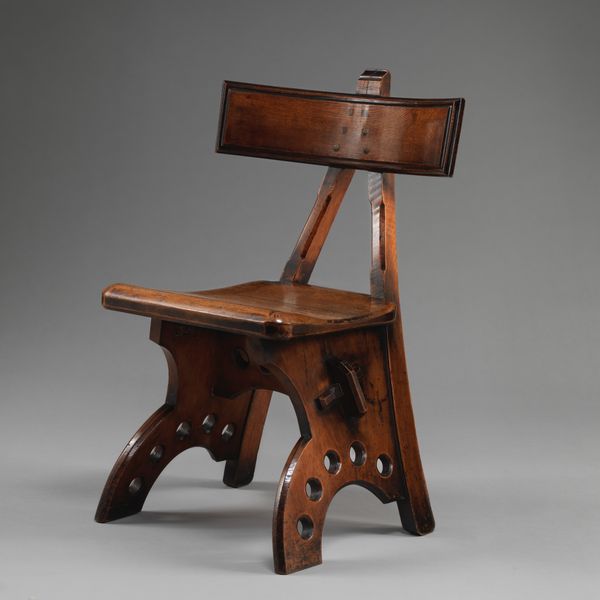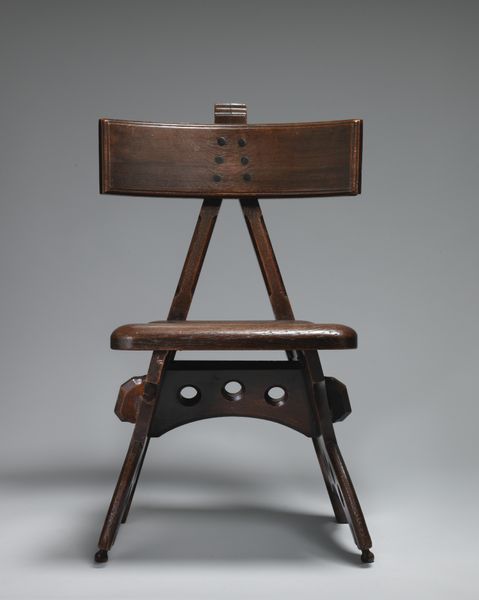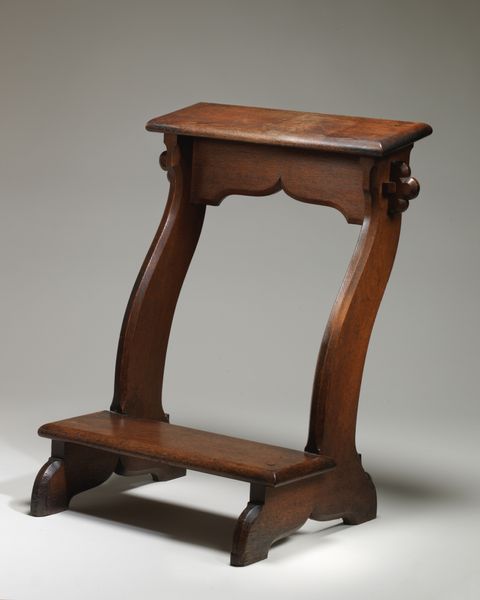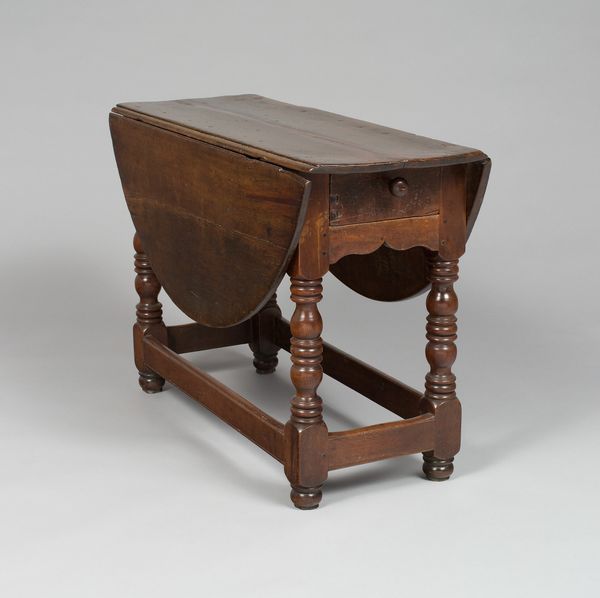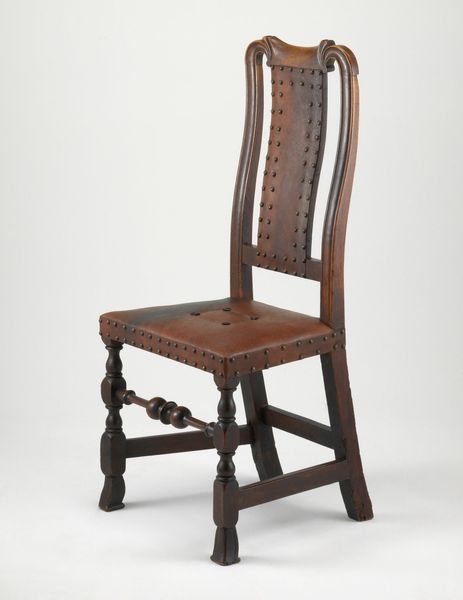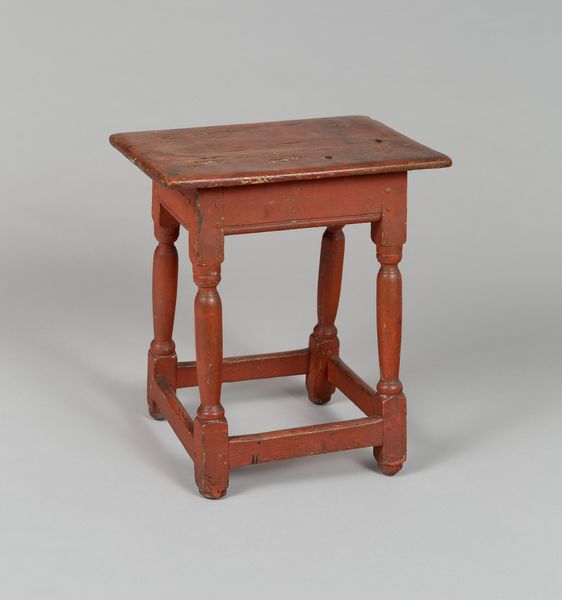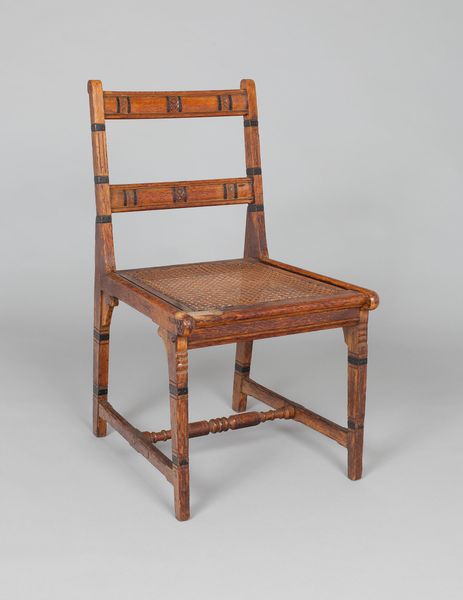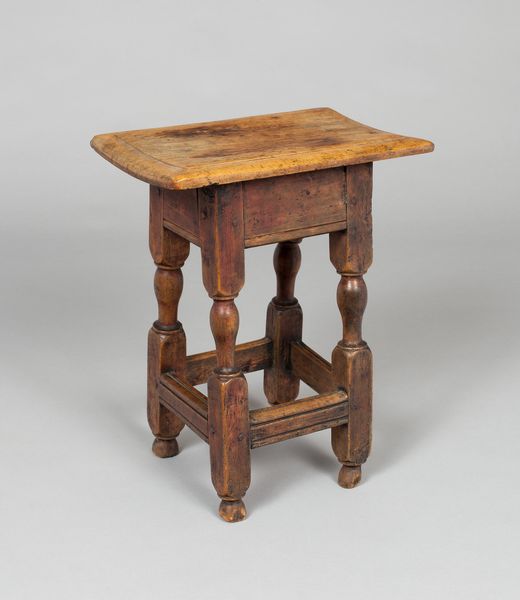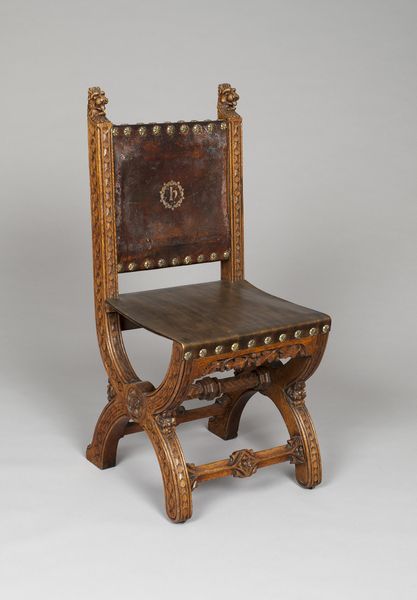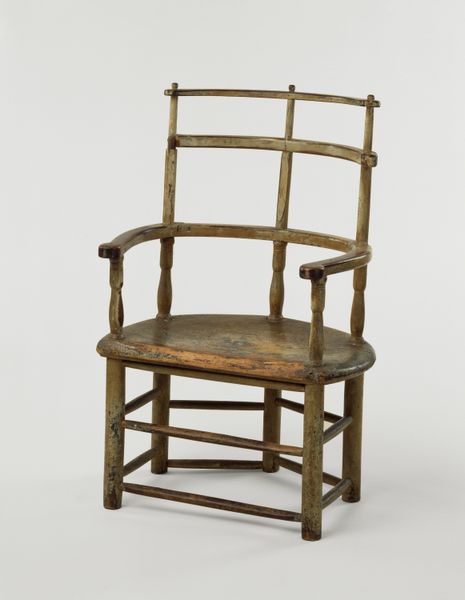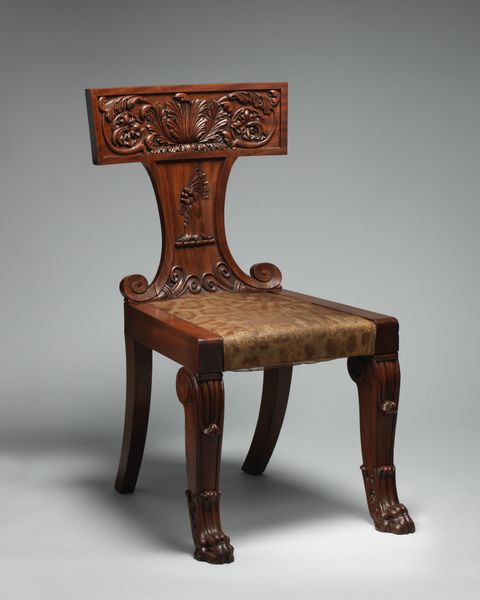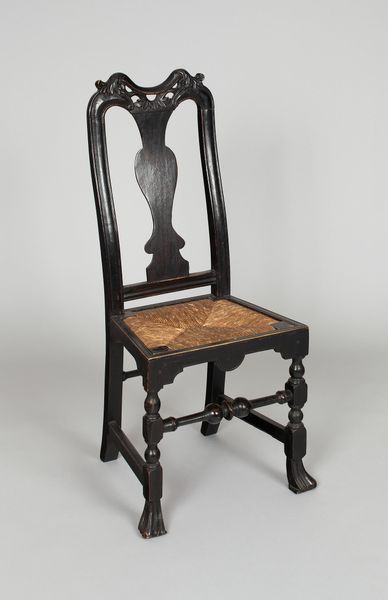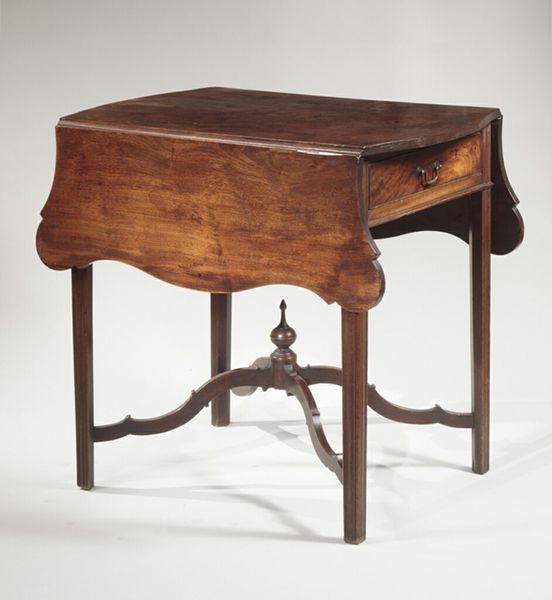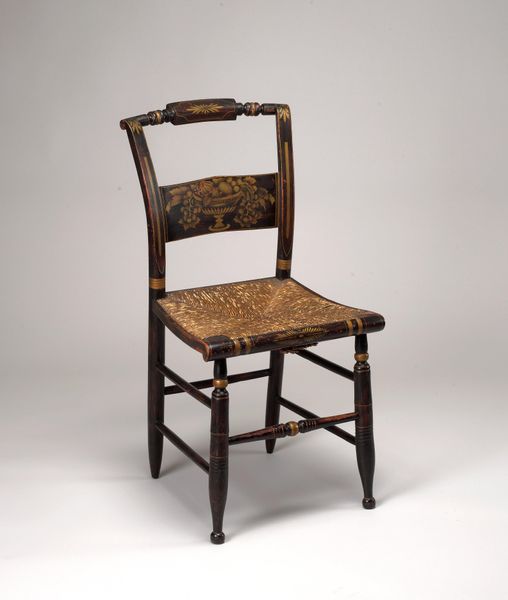
Dimensions: 82.6 × 55.9 × 45.3 cm (32 × 22 × 17 in.)
Copyright: Public Domain
Editor: So, this Side Chair, made of wood around 1870 by Edward Welby Pugin, has such an interesting, almost medieval feel to it. The way the wood is worked, and the geometric cutouts in the legs – it's quite striking. What's your take on it? Curator: This chair is exemplary of the Arts and Crafts movement, emerging during a period of rapid industrialization. The focus on handcrafted production was a direct response to what many saw as the dehumanizing effects of mass-produced goods. Think about the social implications of valuing individual craftsmanship over factory output; it's about more than just aesthetics. How does it fit within the evolving social landscape of the 19th Century? Editor: So, it's a statement? A political object? Curator: Absolutely. The Arts and Crafts movement was invested in the idea of a 'total work of art,' where even functional objects could elevate the lives of ordinary people. This wasn’t merely about aesthetics; it was a deliberate effort to uplift the working class by providing beautiful and well-made alternatives to industrialized goods. How might the consumption of such an object impact society? Who has access to this design? Editor: It is certainly a change to regular furniture. It is interesting how a simple object can express resistance against society’s values. Curator: Exactly. Appreciating this chair requires an understanding of the socio-political forces at play during its creation. It serves as a tangible reminder of art’s role in shaping cultural identity and challenging established norms. Editor: I hadn't considered how deeply ingrained social commentary could be in something as simple as a chair. That gives me a lot to think about.
Comments
No comments
Be the first to comment and join the conversation on the ultimate creative platform.
